Lego Challenge #18: Reverse engineering Lego bricks
Detailed description of project
If you have spent some time with Lego bricks, you have probably noticed some basic facts. For example: A 1×1 Lego brick is taller than it is wide, the stud is a good deal wider than the brick itself, and if you look at the bottom of a longer brick you will see small solid columns or large hollow columns, and that a plate is 1/3 the thickness of a brick. You may also know the 5 to 6 ratio – 5 Lego bricks tall is almost the same length as 6 bricks wide.
Use these simple facts (3 plates to 1 brick, 5 to 6 ratio) to make an educated guess of the relative proportions of features of common Lego bricks and components. Determine the smallest common divisor of a Lego brick, and establish this as your own “SI Unit of Lego”. Do this without looking at your Lego bricks or measuring them. paper and trigonometry may help!
Afterwards, compare your predictions against real bricks to see if they were accurate.
My predictions
My prediction was that the thickness of the wall of a common 1×1 brick would be 1/2 the thickness of a normal plate, and this would form a good standard unit to measure within a brick. I decided to name this unit a “Plastic” or “P” for short. If a brick is 5P wide, and each wall is 1P wide, that suggests that studs would be 3P wide.
A relatively common brick that is perfect to exercising this system is brick # 4070. I predicted that the small foot on this brick would protrude 1P by 1P because I knew that the edge of the stud on top came flush to the face with the sideways-facing stud.
I also predicted that there would actually be another smaller unit based on the hollow stud facing outwards on this piece. In drawing this piece on graph paper, I decided that the inner diameter of the hollow stud would be around 2p. This was strictly a guess, but the resulting drawing looked to have the same proportions as a normal hollow studded brick. That means that the walls of a hollow-stud are thin, they are 1/2P, a lot thinner than the walls of a normal brick.
The last challenge was determining the inner and outer dimension of the round supportive tubes on the bottom of a wide brick or plate. I knew the inner diameter of the tube would be 3P, since a normal stud can snap in there, so I used trigonometry to calculate the thickness. This results in a tube thickness a little more than 1/2P (.55P) which seemed reasonable based on my memory.
In summary, I predicted:
- Brick width = 5 P
- Brick height= 6 P
- plate height = 2 P
- Wall thickness = 1 P
- Wall of hollow stud = 1/2 P
- Wall of hollow pillar on bottom of wide brick or plate = .55 P
- Diameter of objects that minifigs can hold (ex flag pole) = 2p
Verifying my predictions
To verify my predictions, I built a bunch of small experiments.
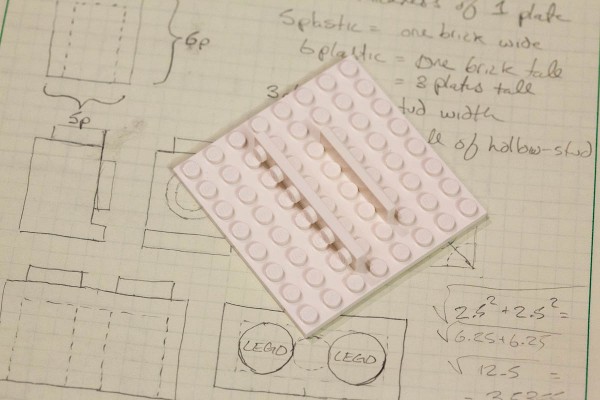
- Experiment proving that the foot of 4070 is 1/2 of thickness of a standard plate.
- Diagram and experiment showing that stud height is about 1P.
- small gap between bricks placed at angle shows that tube thickness slightly exceeds 1/2P.
Conclusion
I think it is cool that I was almost exactly right on all of my predictions. There were some small variations, but the tolerances were small and often explained by intentional wiggle room in the brick design.
build time: 1 hour to draw and verify my solution. (excluding the time I spent thinking through the likely solution

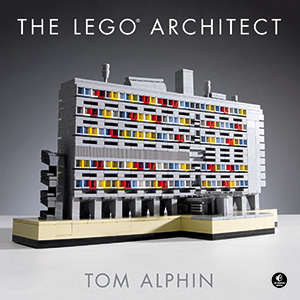

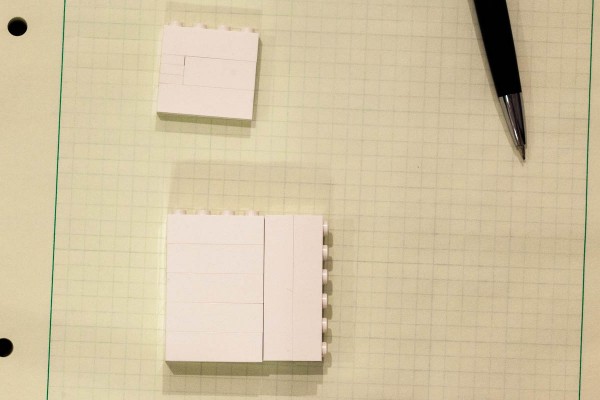
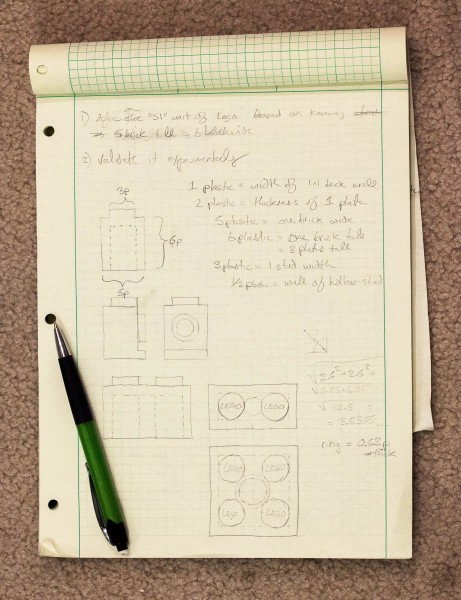


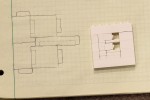

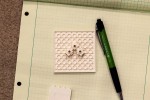
 TOM ALPHIN builds
TOM ALPHIN builds
My apologies for not posting in a couple days – I have been out of town for some first aid training.
I also wanted to let people know that Commenting was broken the last couple days and is now fixed. Thanks!
I wanted to mention that this has become one of the most visited articles on my site. A lot of traffic is directed to this page by the following forum discussion on brickset.com
Link: http://www.bricksetforum.com/discussion/12823/calculating-minifig-scale-and-defining-the-fundamental-si-unit-of-a-lego-brick
I just found some additional resources which might be interesting if you really want to geek out on the LEGO System:
– The LDraw Unit system defines one plate as 8 LDraw Units tall. (That’s 4 of my own “p” units.) http://www.brickwiki.info/wiki/LDraw_unit
– some intensely precise measurements and analysis of the LEGO System: http://www.robertcailliau.eu/Alphabetical/L/Lego/Dimensions/General%20Considerations/ and http://www.robertcailliau.eu/Alphabetical/L/Lego/Dimensions/More%20Dimensions/
– From the same author, a look at how some LEGO parts evolved over time: http://www.robertcailliau.eu/Alphabetical/L/Lego/Dimensions/Shape%20Evolution/
what is a p in mm